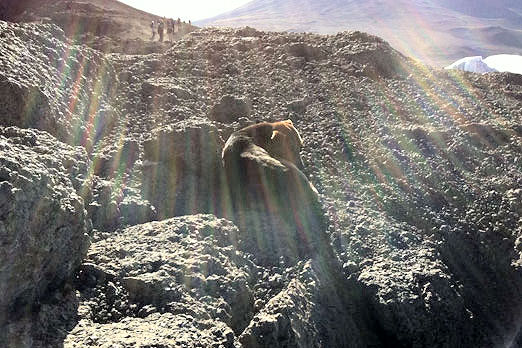Unusual sightings of animals on Mount Kilimanjaro are rare, bearing in mind that the upper slopes of the mountain do not offer a conducive environment for animals to survive, let alone thrive. Kilimanjaro National Park covers a vast area of 652 square miles, making it a fascinating destination for adventurers seeking diverse wildlife. The mountain itself is an enormous volcano, standing majestically amidst lush and untamed forests that stretch as far as the eye can see. Within the park’s boundaries, a variety of captivating mammals can be found, each offering a unique glimpse into the wonders of nature. As explorers venture through the park, it is not uncommon to stumble upon troops of blue monkeys gracefully swinging from tree to tree, their vibrant fur shining under the warm African sun. Among the treetops, black and white colobus monkeys are also known to make their presence known, with their striking appearance and playful demeanor captivating anyone lucky enough to witness their antics. In the past, the lower slopes of Mount Kilimanjaro were adorned with the footprints of majestic creatures, awe-inspiring in both their size and beauty. These slopes were once home to awe-inspiring buffalo, gracefully roaming the plains, their strength and resilience harmoniously blending with the land. Giraffes could be seen gracefully extending their long necks, their spots mirrored in the trees around them, as if nature itself had painted a masterpiece. Elephants, looming in all their grandeur, left a trail of magic and mystery as they gracefully moved through the park, their majestic presence commanding respect from all who crossed their path. And in the depths of the wilderness, lions, the kings and queens of the savannah, roamed these lands, embodying power and grace. To ensure the safety of trekking parties, park rangers would accompany them, their extensive knowledge of the area providing valuable guidance. However, with the passage of time, these magnificent animals, once abundant, have gradually migrated to areas with less human presence. Their elusive nature has made sightings extremely rare, heightening the allure and mystery of encountering them. Nevertheless, there have been a few exceptional encounters with wildlife, both in the distant past and more recently. These extraordinary moments stand as testaments to the captivating allure of Kilimanjaro National Park and its breath-taking inhabitants.
The Mummified Buffalo
Buffalo are known to occasionally explore the elevated areas of the mountains, enticed by the presence of salt and various minerals found on the rocks. Regrettably, in approximately 2009, one of these buffalo became trapped between large boulders and ultimately perished due to starvation. When stumbled upon by local porters, the buffalo’s body was remarkably well-preserved and fully intact. Subsequently, arrangements were made to relocate the carcass away from its original position and put it on exhibition near the hiking trail, specifically between the Third Cave Campsite and School Hut. This unique attraction remained in place for numerous years, captivating and enthralling those who journeyed through the northern routes.
 The Summit Dog
The Summit Dog
In 2011, an interesting sighting occurred near the peak of Kilimanjaro. While Antoine le Galloudec was relieving himself on the rocky terrain, he came across a slender brown dog aimlessly wandering around. Luckily, he managed to capture a picture of the dog on his mobile phone. This encounter has sparked curiosity about how and why this animal found itself in such frigid conditions at such a high altitude. It seems implausible for a dog to find sustenance up there, as there is simply no food available. Upon hearing about this peculiar occurrence, a veterinarian expressed surprise, as dogs can indeed withstand cold temperatures, but it is highly uncommon for one to willingly venture into an unforgiving environment when the lower region provides a more suitable habitat. The veterinarian also suggested the possibility of the dog being rabid. However, a local guide claimed that this dog might be the same one he encountered a decade earlier in a camp lower down on Kilimanjaro. For those concerned about the dog’s welfare and pondering whether rescue attempts should have been made, it is important to note that a dog that can climb to the summit could easily find its way back down if it desired to do so. With plenty of humans to follow and clearly marked paths, navigating the descent would not pose a significant challenge..
More about the dog that was spotted on the mountain
The Frozen Leopard
In Ernest Hemingway’s short story “The Snows of Kilimanjaro,” a leopard carcass is found near the summit. This leopard had ventured outside of its usual habitat and ended up freezing to death in solitude close to the mountain’s peak. This serves as a symbolic representation of the story’s protagonist, Harry, who, like the leopard, wasted his talents and potential in various aspects of life. Although it is a work of fiction, Hemingway’s reference is rooted in reality.
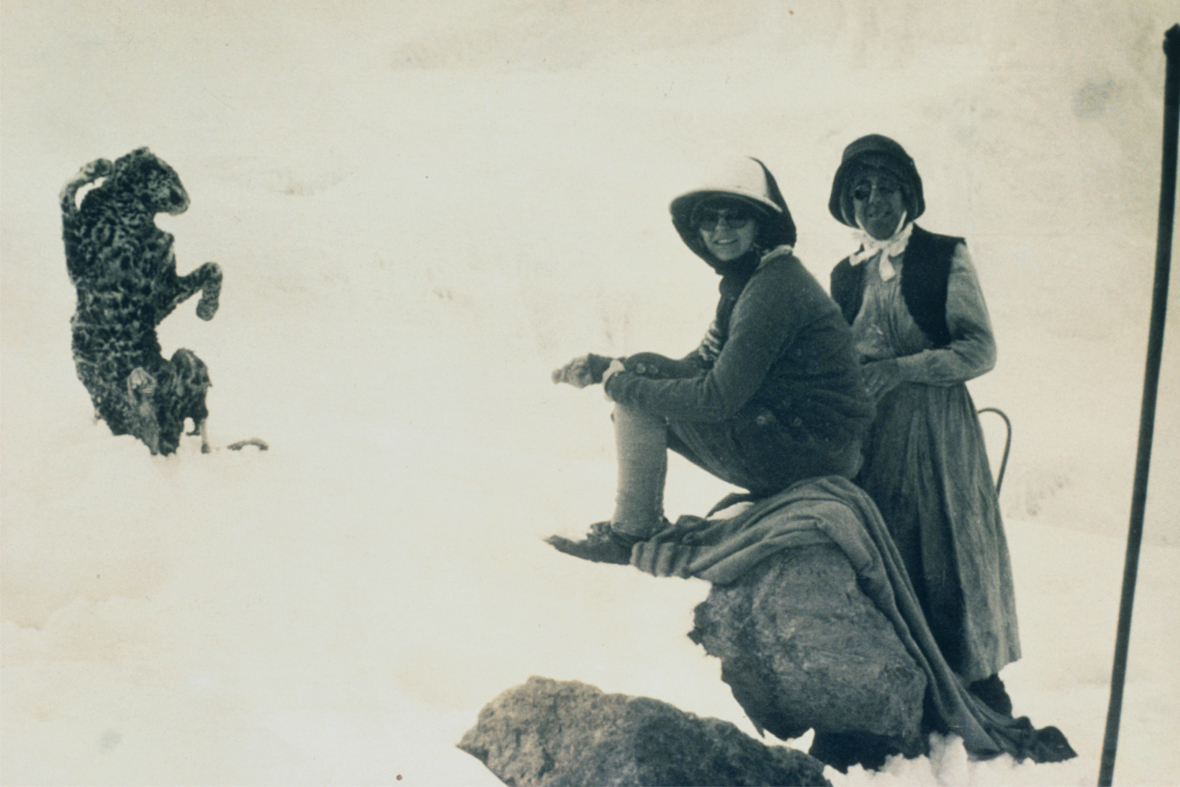 In 1926, mountaineer Richard Reusch stumbled upon the preserved remains of a leopard at the rim of Kibo, approximately 18,500 feet above sea level. It is believed that the animal perished while in pursuit of a goat, whose remains were discovered nearby. Fascinated by the find, Reusch took a piece of the leopard’s ear as a personal memento. This specific area where the carcass was found is now known as “Leopard Point.”
In 1926, mountaineer Richard Reusch stumbled upon the preserved remains of a leopard at the rim of Kibo, approximately 18,500 feet above sea level. It is believed that the animal perished while in pursuit of a goat, whose remains were discovered nearby. Fascinated by the find, Reusch took a piece of the leopard’s ear as a personal memento. This specific area where the carcass was found is now known as “Leopard Point.”
Read about the frozen leopard discovered on Kilimanjaro
Camels climbing Kilimanjaro
People were astonished when they saw a group of mountaineers from the United Arab Emirates set out on a symbolic quest to be the first in the world to scale Kilimanjaro with the normally desert-dwelling creatures.
They rode camels 9,000 kilometres from Yemen to South Africa in a year, setting a new world record. ”
Camels in Africa”Africa by Camel,” a YouTube documentary, depicts Ahmad’s struggles in 2013, including being shot at in lawless parts of Africa and being attacked by a hyena while sleeping.
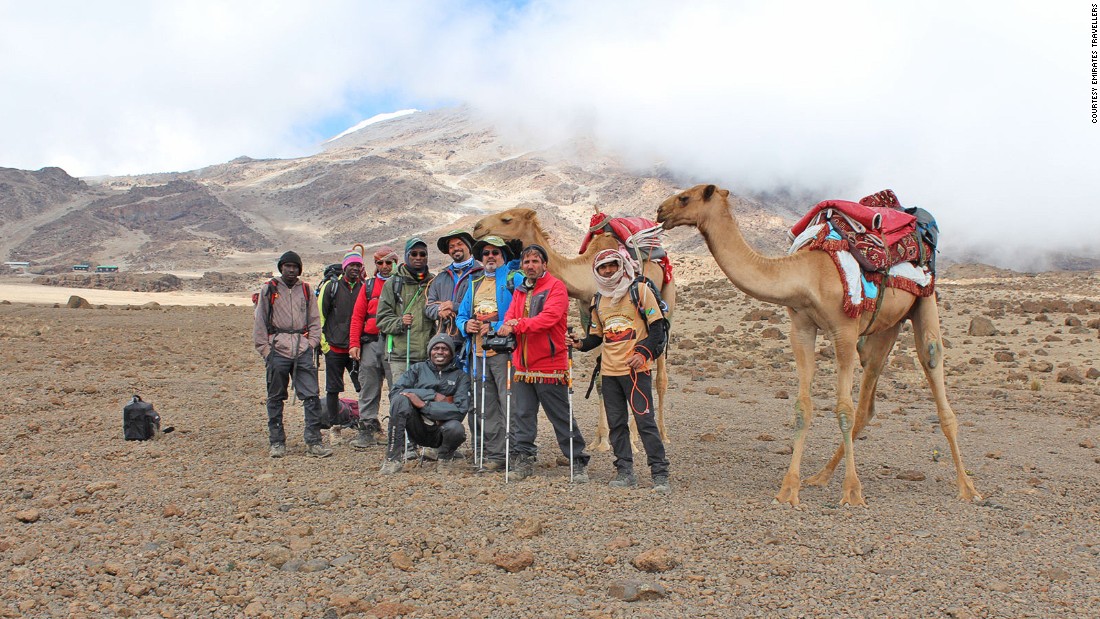 Climbing Kilimanjaro with camels
Climbing Kilimanjaro with camels
![]()

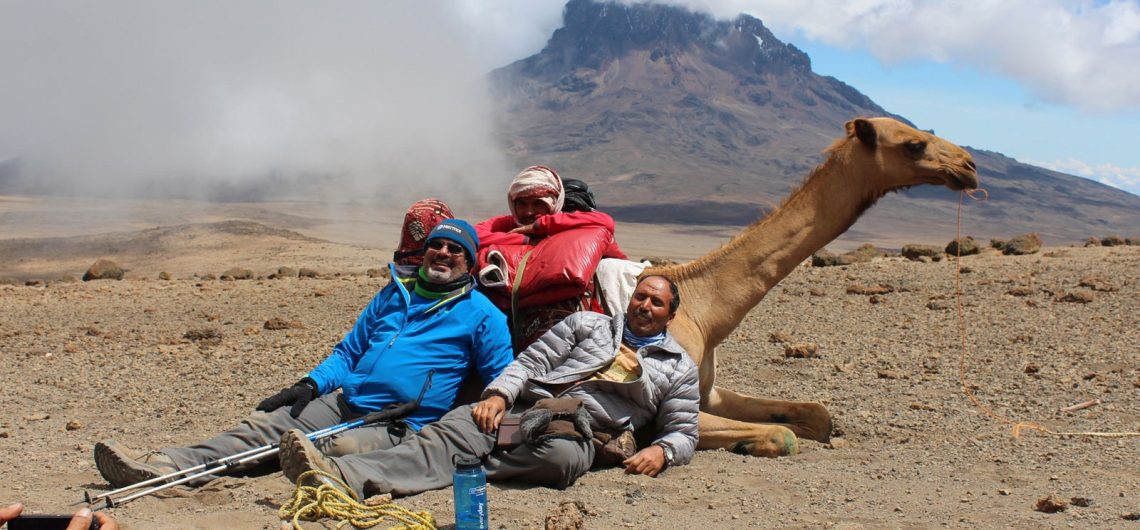
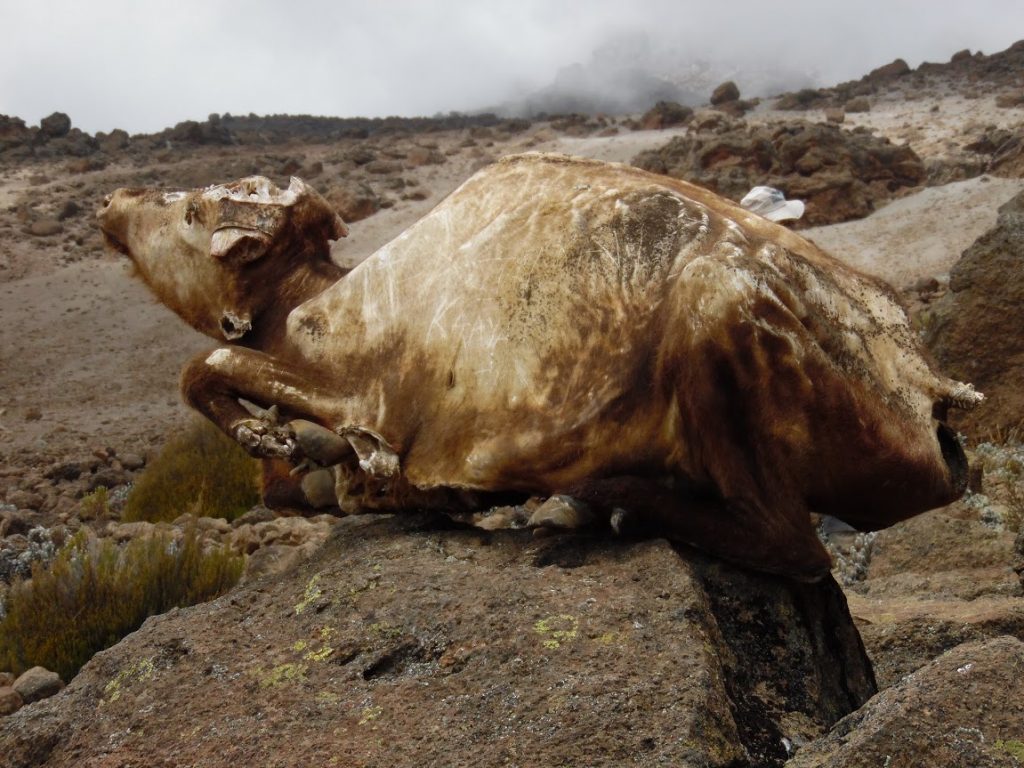 The Summit Dog
The Summit Dog